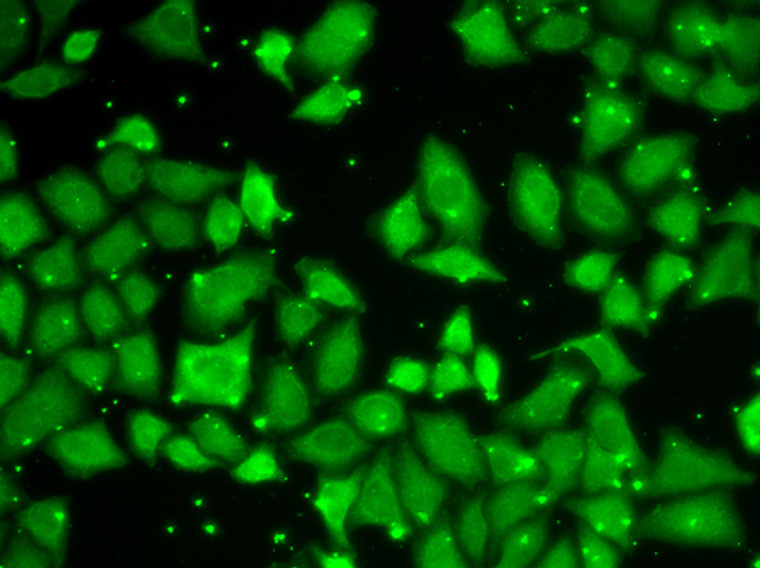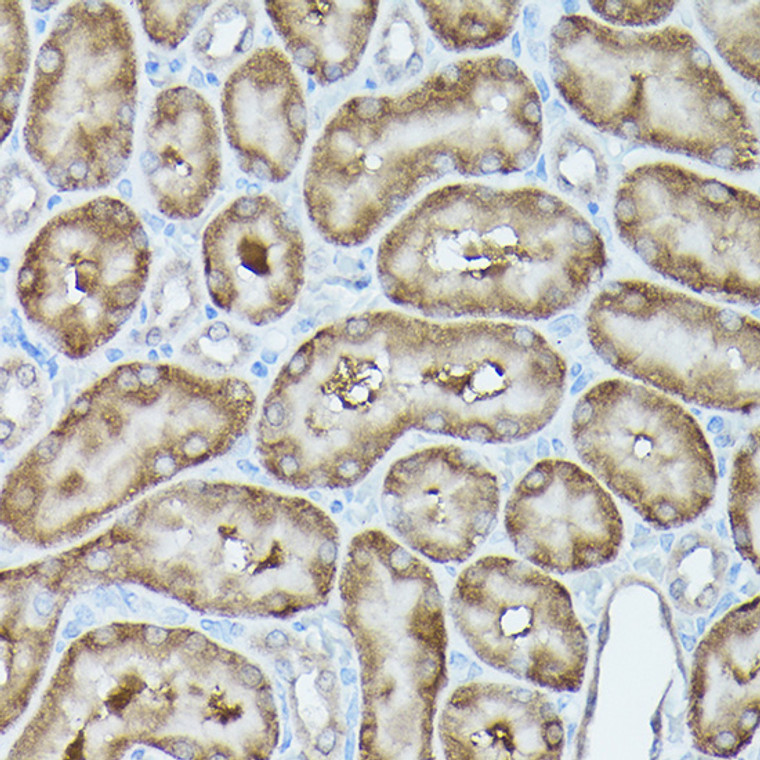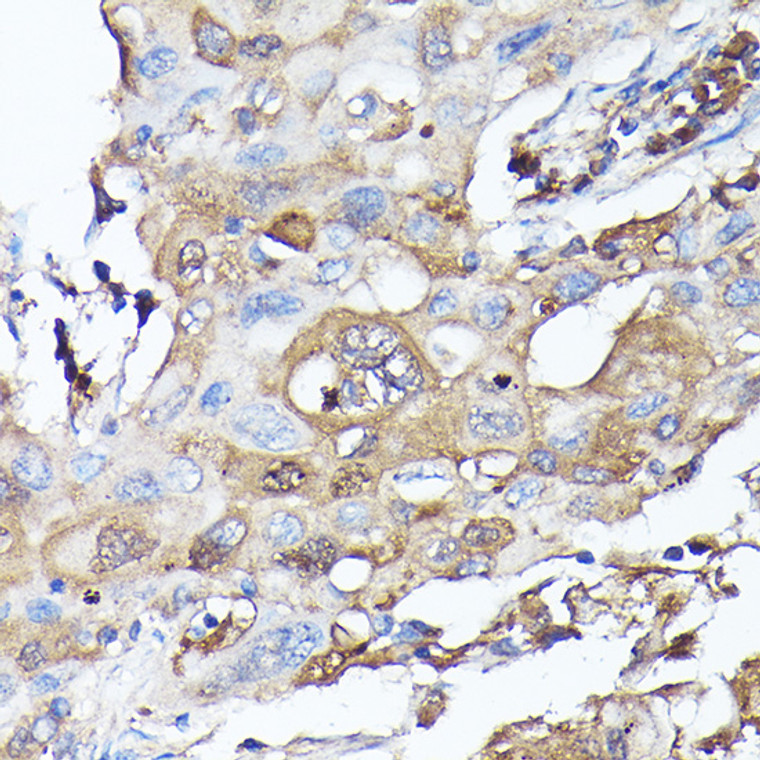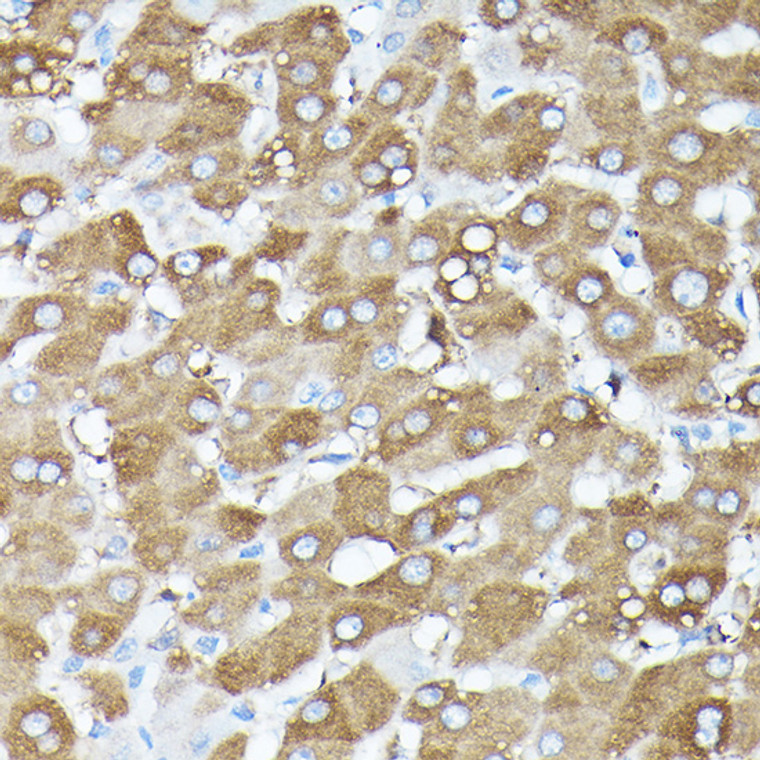| Host: |
Rabbit |
| Applications: |
WB/IHC/IF |
| Reactivity: |
Human/Mouse/Rat |
| Note: |
STRICTLY FOR FURTHER SCIENTIFIC RESEARCH USE ONLY (RUO). MUST NOT TO BE USED IN DIAGNOSTIC OR THERAPEUTIC APPLICATIONS. |
| Short Description: |
Rabbit polyclonal antibody anti-MLST8 (1-326) is suitable for use in Western Blot, Immunohistochemistry and Immunofluorescence research applications. |
| Clonality: |
Polyclonal |
| Conjugation: |
Unconjugated |
| Isotype: |
IgG |
| Formulation: |
PBS with 0.01% Thimerosal, 50% Glycerol, pH7.3. |
| Purification: |
Affinity purification |
| Dilution Range: |
WB 1:500-1:2000IHC-P 1:50-1:200IF/ICC 1:50-1:200 |
| Storage Instruction: |
Store at-20°C for up to 1 year from the date of receipt, and avoid repeat freeze-thaw cycles. |
| Gene Symbol: |
MLST8 |
| Gene ID: |
64223 |
| Uniprot ID: |
LST8_HUMAN |
| Immunogen Region: |
1-326 |
| Immunogen: |
Recombinant fusion protein containing a sequence corresponding to amino acids 1-326 of human MLST8 (NP_001186103.1). |
| Immunogen Sequence: |
MNTSPGTVGSDPVILATAGY DHTVRFWQAHSGICTRTVQH QDSQVNALEVTPDRSMIAAA GYQHIRMYDLNSNNPNPIIS YDGVNKNIASVGFHEDGRWM YTGGEDCTARIWDLRSRNLQ CQRIFQVNAPINCVCLHPNQ AELIVGDQSGAIHIWDLKTD HNEQLIPEPEVSITSAHIDP DASYMAAVNSTGNCYVWNLT GGIGDEVTQLIPKTKIPAHT RYALQCRFSPDSTLLATCS |
| Tissue Specificity | Broadly expressed, with highest levels in skeletal muscle, heart and kidney. |
| Post Translational Modifications | Phosphorylation at Thr-51 by CDK1 promotes ubiquitination by the SCF(FBXW7) complex, followed by degradation. Ubiquitination by the SCF(FBXW7) and SCF(FBXW11) complexes following phosphorylation at Thr-51 by CDK1, leads to its degradation by the proteasome. |
| Function | Subunit of both mTORC1 and mTORC2, which regulates cell growth and survival in response to nutrient and hormonal signals. mTORC1 is activated in response to growth factors or amino acids. In response to nutrients, mTORC1 is recruited to the lysosome membrane and promotes protein, lipid and nucleotide synthesis by phosphorylating several substrates, such as ribosomal protein S6 kinase (RPS6KB1 and RPS6KB2) and EIF4EBP1 (4E-BP1). In the same time, it inhibits catabolic pathways by phosphorylating the autophagy initiation components ULK1 and ATG13, as well as transcription factor TFEB, a master regulators of lysosomal biogenesis and autophagy. The mTORC1 complex is inhibited in response to starvation and amino acid depletion. Within mTORC1, LST8 interacts directly with MTOR and enhances its kinase activity. In nutrient-poor conditions, stabilizes the MTOR-RPTOR interaction and favors RPTOR-mediated inhibition of MTOR activity. mTORC2 is also activated by growth factors, but seems to be nutrient-insensitive. mTORC2 seems to function upstream of Rho GTPases to regulate the actin cytoskeleton, probably by activating one or more Rho-type guanine nucleotide exchange factors. mTORC2 promotes the serum-induced formation of stress-fibers or F-actin. mTORC2 plays a critical role in AKT1 'Ser-473' phosphorylation, which may facilitate the phosphorylation of the activation loop of AKT1 on 'Thr-308' by PDK1 which is a prerequisite for full activation. mTORC2 regulates the phosphorylation of SGK1 at 'Ser-422'. mTORC2 also modulates the phosphorylation of PRKCA on 'Ser-657'. |
| Protein Name | Target Of Rapamycin Complex Subunit Lst8Torc Subunit Lst8G Protein Beta Subunit-LikeGableProtein GbetalMammalian Lethal With Sec13 Protein 8Mlst8 |
| Database Links | Reactome: R-HSA-1257604Reactome: R-HSA-1632852Reactome: R-HSA-165159Reactome: R-HSA-166208Reactome: R-HSA-3371571Reactome: R-HSA-380972Reactome: R-HSA-389357Reactome: R-HSA-5218920Reactome: R-HSA-5628897Reactome: R-HSA-5674400Reactome: R-HSA-6804757Reactome: R-HSA-8943724Reactome: R-HSA-9639288 |
| Cellular Localisation | Lysosome MembraneCytoplasmTargeting To Lysosomal Membrane Depends On Amino Acid Availability: Mtorc1 Is Recruited To Lysosome Membranes Via Interaction With Gtp-Bound Form Of Raga/Rraga (Or Ragb/Rragb) In Complex With The Gdp-Bound Form Of Ragc/Rragc (Or Ragd/Rragd)Promoting Its Mtorc1 Recruitment To The Lysosomes |
| Alternative Antibody Names | Anti-Target Of Rapamycin Complex Subunit Lst8 antibodyAnti-Torc Subunit Lst8 antibodyAnti-G Protein Beta Subunit-Like antibodyAnti-Gable antibodyAnti-Protein Gbetal antibodyAnti-Mammalian Lethal With Sec13 Protein 8 antibodyAnti-Mlst8 antibodyAnti-MLST8 antibodyAnti-GBL antibodyAnti-LST8 antibody |
Information sourced from Uniprot.org
12 months for antibodies. 6 months for ELISA Kits. Please see website T&Cs for further guidance












